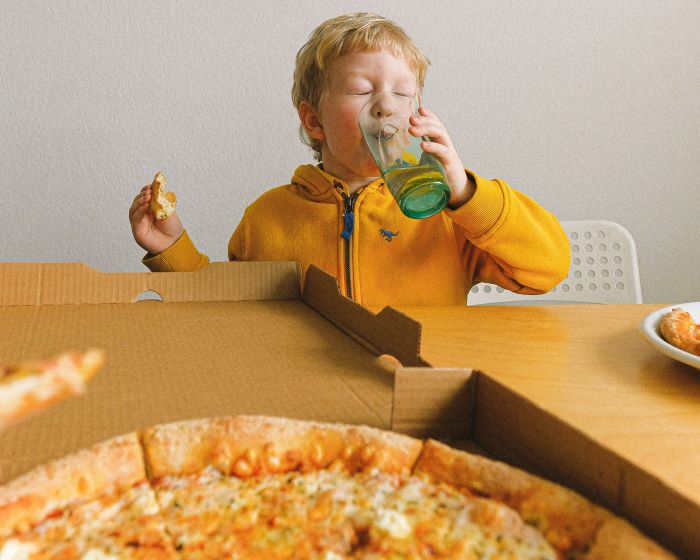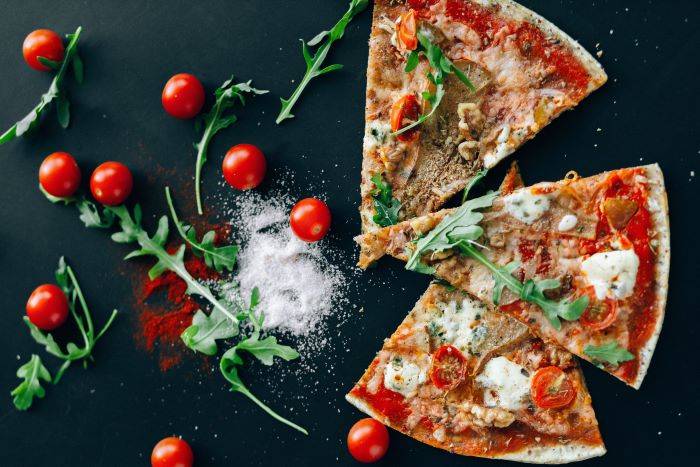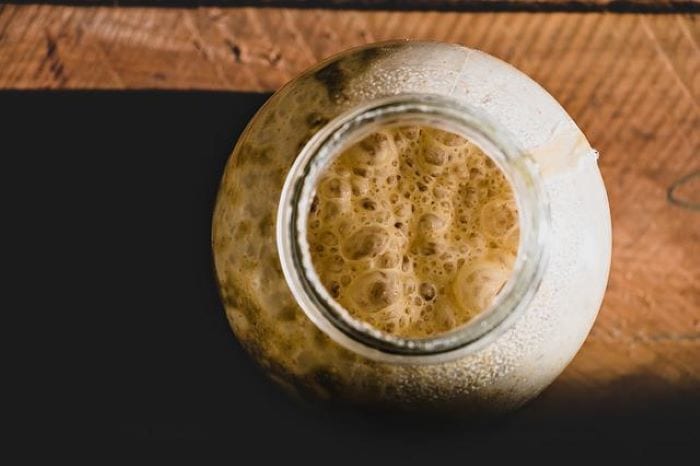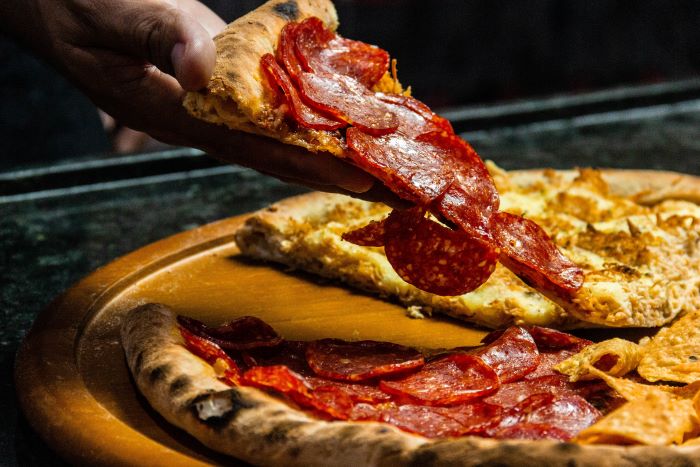Pizza Ovens Web participates in various affiliate programs, which means we may get paid commissions on certain products purchased through links in our blog.
Why Does Pizza Make Me Thirsty? – Beat The Pizza Thirst

Pizza is one of the most popular foods in the world. It’s delicious, it’s easy to make, and it’s perfect for any occasion. But there’s one thing about pizza that can be really irritating.
Every pizza lover will agree that one of the annoying things about eating pizza is how thirsty it can make you.
Even after a few bites, your mouth will start feeling parched and dry.
But why does this happen? Why does pizza give you that feeling? Can you prevent it from happening?
If you want to know the answers to these questions, stay tuned.
In this guide, you’ll learn why pizza makes you thirsty (including the science behind it), and I’ll be sharing the best tips and tricks that will prevent it from happening on your next pizza night.
Table of Contents
1. The pizza contains too much sodium

If you’ve ever had a slice of pizza and felt extremely thirsty after it, chances are that a high amount of sodium was the reason.
But why does this happen?
Well, It turns out that pizza can be surprisingly high in sodium. A single slice of pizza can contain over 600 milligrams of sodium, which is more than a third of the recommended daily intake.
When you consume too much sodium, your body tries to balance things out by pulling water from your bloodstream into your urine.
This process can actually lead to dehydration, which is probably the reason you feel so thirsty after eating a salty meal.
How to solve
If you have a feeling that a high amount of sodium is the reason you feel thirsty, here are some simple tips that will help you overcome that issue.
Reduce the amount of salt you use
If you make your own pizzas at home I have some good news for you, reducing the amount of salt is possible and quite simple to do.
Dough and cheese are the main sources of salt in pizzas. Therefore, you’ll want to reduce the amount of salt they contain.
When it comes to the dough, simply reduce by a few grams the amount of salt you add when making it.
As for the cheese, people tend to use low-quality cheeses on their pizzas that are stuffed with preservatives and salt. In this case, choose a higher quality cheese with a lower sodium content (such as mozzarella) or just try using less of it.
Avoid eating store-bought frozen pizzas
Another way to reduce your sodium intake is by avoiding store-bought frozen pizzas. Not only do they contain unhealthy preservatives, but they also tend to be loaded with salt.
In my opinion, your best bet here is to either make your own at home or order one from a pizzeria that uses fresh ingredients.
If you still can’t live without store-bought pizzas, at least try to find brands that offer a “low sodium” option.
2. The dough has a lacking amount of gluten

The next reason that can cause you to feel thirsty after eating a pizza is a lacking amount of gluten development in the dough.
In short, gluten is the protein found in wheat flour that gives the dough its elasticity, chewiness, and structure.
If the gluten in the dough hasn’t been properly developed, the pizza will be harder to digest and will require your body to work harder – resulting in a feeling of thirst.
(This happens because your body needs more water to break down the food)
How to solve
In this case, the solution is simple. If you usually eat fast food pizza, try finding a higher quality one. On the other hand, if you make your own pizzas, you’ll need to improve the quality of the dough’s fragmentation.
The most simple way to improve fragmentation is by letting the dough rest.
But that is pretty obvious, isn’t it?
Well, as a general role of thumb, the dough should double its size to achieve proper gluten development. If you wish to master dough fragmentation, you can read more in this dedicated guide.
3. Your toppings are too salty

Although this reason relates to the first one, I feel it is one of the most important ones that is missed by many.
As you all know, toppings take a major place on every pizza (and there are a lot of them to choose from).
However, what many people don’t know is that some toppings can be quite high in sodium and can add a major amount of it to your diet.
For example, cured meats such as pepperoni, ham, and bacon are all generally quite high in salt (and who doesn’t love pepperoni on his pizza).
The same goes for pickled vegetables, olives, and even some cheeses and anchovies.
The solution here is simple, you can either reduce the amount of topping you use, or try going for the same ones that contain a reduced amount of sodium
The bottom line
After reading this article, you should now have a good understanding of why you feel thirsty after eating pizza.
All in all, there are three main reasons that can cause this feeling:
– Eating pizza that is high in sodium
– Dough that hasn’t been properly developed (lacking gluten development),
– Using toppings that are also high in sodium.
Fortunately, all of these problems can be easily solved. For example, you can try making your own pizza at home with quality and reduced sodium ingredients, or find a pizzeria that does the same.
As for the toppings, simply try to reduce the amount you use or go for lower sodium options.
Hopefully, by applying these tips, you’ll be able to enjoy your favorite food without having to worry about feeling thirsty afterwards.
I hope you enjoyed reading this article and that it was helpful to you.
If you have any questions or comments, feel free to get in touch and I’ll be more than happy to answer.